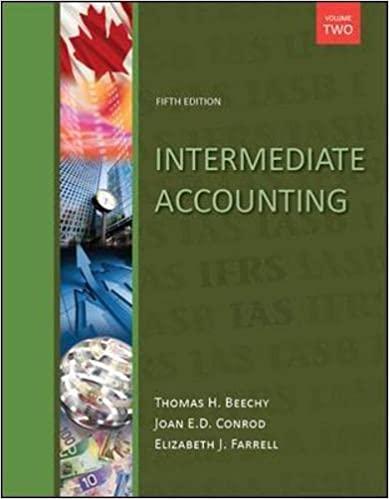Description of several financial instruments follows: Case 1 Class D Series 2 shares, carrying a dividend entitlement
Question:
Description of several financial instruments follows:
Case 1 Class D Series 2 shares, carrying a dividend entitlement equal to $5 per share or an amount equal to common share dividends, whichever is higher, redeemable at the investor’s option at $62 per share. The company may, at its option, redeem the shares with class A common shares instead of cash, valued at their current market value.
Case 2 Convertible subordinated bonds payable, entitled to annual cash interest at 3.2%. At maturity, the bonds will be settled through the issuance of shares using an exchange price of $14 per share. Interest may also be paid in shares valued at $14 per share at the company’s option.
Case 3 Series F second preferred shares, carrying a fixed cumulative dividend of $1 per share. The shares must be redeemed by the company at a price of $21 per share, plus dividends in arrears, if any, in 20X4.
Case 4 Convertible subordinated debentures payable, entitled to annual interest at 3.2%. At maturity, the debentures may, at the company’s option, be paid out in cash or converted into common shares using an exchange ratio governed by the market value of shares at the conversion date.
Case 5 Series C first preferred shares, carrying a fixed cumulative dividend of $1.25 per share per annum, redeemable at the company’s option at $25 per share.
Case 6 Series II preferred shares, carrying a fixed cumulative dividend of $1.75 per share increasing to $6.10 in 20X8. The shares are redeemable at the company’s option at a price of $28 per share until 31 December 20X7 and at a price of $62 thereafter.
Case 7 Convertible subordinated 6% notes payable. At maturity, the debentures may, at the company’s option, be paid out in cash or converted into common shares at the set exchange price of $30 per share.
Required:
Classify each of the above items as a financial liability, equity instrument, or compound instrument (part debt and part equity).
Step by Step Answer:






